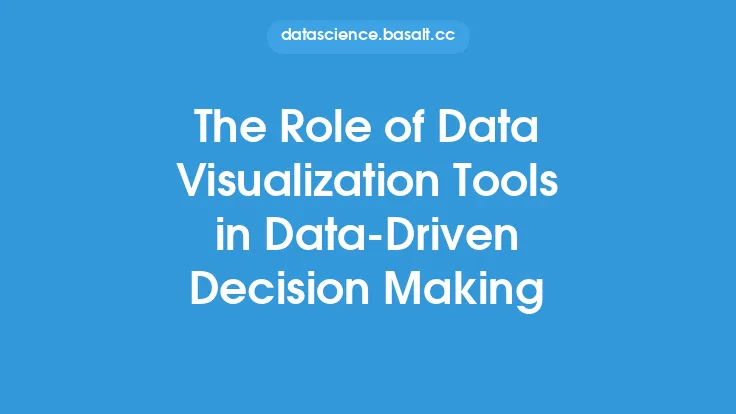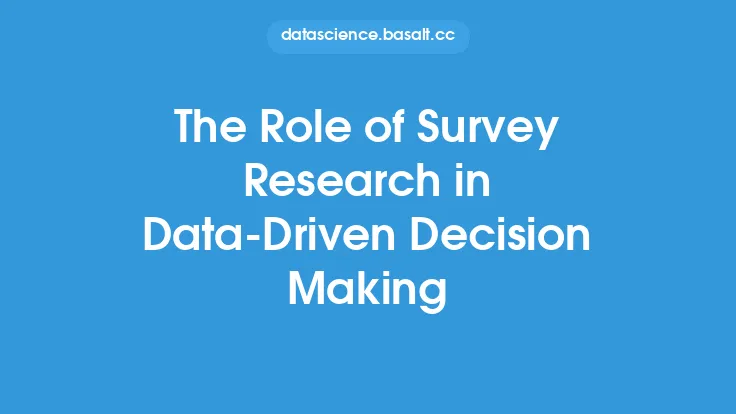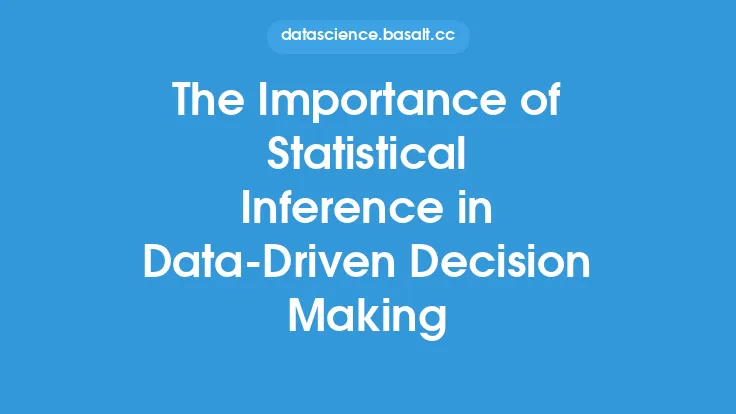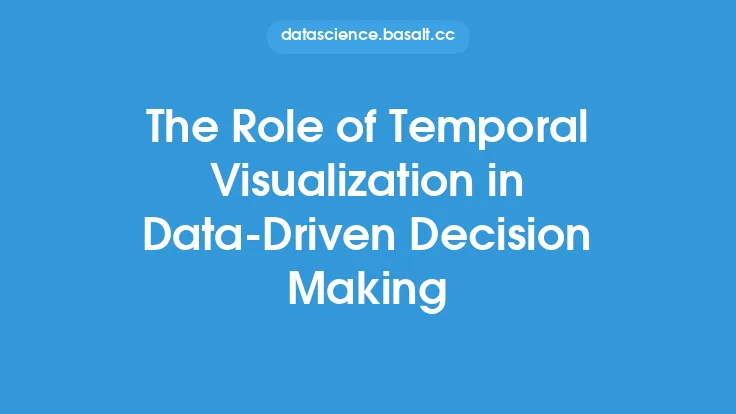In today's data-driven world, organizations rely heavily on data to make informed decisions. However, with the increasing complexity of data ecosystems, it's becoming challenging to ensure that data is accurate, reliable, and trustworthy. This is where data lineage comes into play, providing a clear understanding of the data's origin, movement, and transformation throughout its lifecycle. Data lineage is a critical component of data quality, and its impact on data-driven decision making cannot be overstated.
What is Data Lineage?
Data lineage refers to the process of tracking and documenting the data's journey from its source to its final destination. It involves capturing metadata about the data, such as its origin, processing, and transformation, to provide a clear understanding of how the data was created, modified, and used. Data lineage is essential in ensuring that data is accurate, complete, and consistent, which is critical for making informed decisions.
Benefits of Data Lineage in Data-Driven Decision Making
Data lineage has several benefits that make it an essential component of data-driven decision making. Firstly, it provides transparency into the data's origin and movement, allowing organizations to understand how the data was created and modified. This transparency is critical in ensuring that data is trustworthy and reliable. Secondly, data lineage helps to identify data quality issues, such as errors, inconsistencies, and inaccuracies, which can have a significant impact on decision making. By identifying these issues, organizations can take corrective action to ensure that data is accurate and reliable. Finally, data lineage enables organizations to track data provenance, which is essential in ensuring that data is compliant with regulatory requirements.
Technical Aspects of Data Lineage
From a technical perspective, data lineage involves capturing metadata about the data, such as its origin, processing, and transformation. This metadata can be captured using various techniques, such as data logging, data tracking, and data monitoring. Data logging involves capturing information about the data, such as its creation, modification, and deletion, while data tracking involves monitoring the data's movement and transformation throughout its lifecycle. Data monitoring involves tracking the data's quality and integrity, ensuring that it is accurate, complete, and consistent. Additionally, data lineage can be implemented using various tools and technologies, such as data catalogs, data governance platforms, and data quality tools.
Data Lineage and Data Quality
Data lineage is closely tied to data quality, as it provides a clear understanding of the data's origin, movement, and transformation. Data quality refers to the accuracy, completeness, and consistency of the data, which is critical for making informed decisions. By tracking data lineage, organizations can identify data quality issues, such as errors, inconsistencies, and inaccuracies, which can have a significant impact on decision making. Additionally, data lineage helps to ensure that data is compliant with regulatory requirements, such as data privacy and data security regulations.
Implementing Data Lineage
Implementing data lineage requires a structured approach, involving several steps. Firstly, organizations need to identify the data sources and systems that need to be tracked. Secondly, they need to determine the metadata that needs to be captured, such as data origin, processing, and transformation. Thirdly, they need to select the tools and technologies that will be used to capture and store the metadata. Finally, they need to develop a governance framework that ensures the metadata is accurate, complete, and consistent. Additionally, organizations need to ensure that data lineage is integrated into their existing data management processes, such as data warehousing, data integration, and data analytics.
Challenges and Limitations of Data Lineage
While data lineage is a critical component of data quality, it also has several challenges and limitations. Firstly, implementing data lineage can be complex and time-consuming, requiring significant resources and investment. Secondly, data lineage requires a high degree of data standardization and consistency, which can be challenging to achieve. Thirdly, data lineage can be affected by data silos and fragmentation, which can make it difficult to track data movement and transformation. Finally, data lineage requires ongoing maintenance and updates, which can be resource-intensive and challenging to sustain.
Best Practices for Data Lineage
To overcome the challenges and limitations of data lineage, organizations need to follow best practices. Firstly, they need to develop a clear understanding of their data ecosystem, including data sources, systems, and processes. Secondly, they need to establish a governance framework that ensures data lineage is accurate, complete, and consistent. Thirdly, they need to select tools and technologies that are scalable, flexible, and integrated with their existing data management processes. Finally, they need to ensure that data lineage is ongoing and iterative, with regular updates and maintenance to ensure that it remains accurate and relevant.
Conclusion
In conclusion, data lineage is a critical component of data quality, providing a clear understanding of the data's origin, movement, and transformation. Its impact on data-driven decision making cannot be overstated, as it provides transparency, accuracy, and reliability. By implementing data lineage, organizations can ensure that their data is trustworthy and reliable, which is critical for making informed decisions. While data lineage has several challenges and limitations, following best practices and using the right tools and technologies can help overcome these challenges. As data continues to play an increasingly important role in decision making, the importance of data lineage will only continue to grow.





